Area Calculation Formulas for Young Learners Explained
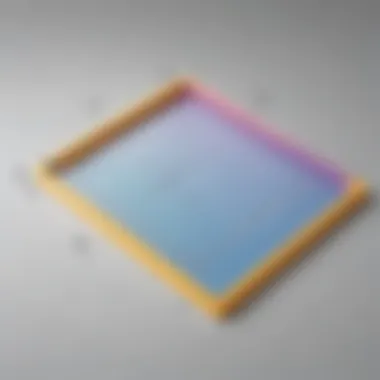
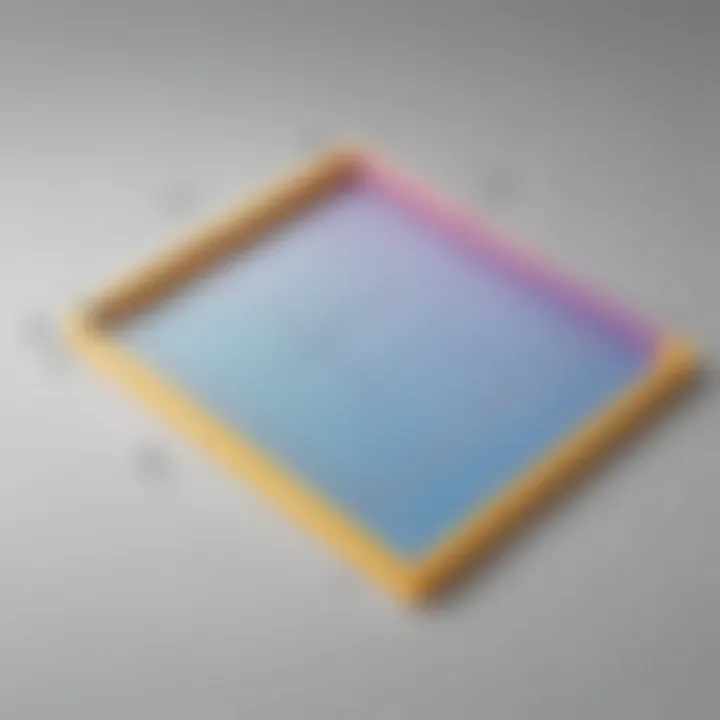
Intro
Understanding area calculation formulas is crucial for young learners. Geometry introduces students to spatial relationships, which can apply to various real-life scenarios. This guide breaks down essential area formulas for different two-dimensional shapes in a simple way. It also highlights exciting activities, quizzes, and articles to develop a strong foundation in geometric principles.
Different shapes like squares, rectangles, circles, and triangles are common in their surroundings. Young minds benefit greatly from grasping how to calculate areas of these shapes. With engaging content and visual aids, we aim to make learning enjoyable while ensuring comprehension of the topics at hand.
By exploring these foundational concepts, students gain skills that will support their future studies in mathematics and science.
Creative Activities
Engagement in creative activities allows young learners to grasp concepts better. Here are fun and educational exercises that teach area calculations in a hands-on manner:
Craft Ideas
- Shape Collage: Children can cut out various shapes from colored paper. They can arrange these shapes to create a collage representing different areas.
- Building Blocks: Using blocks, kids can form squares and rectangles. They can calculate the area by counting the blocks used.
Step-by-Step Guides
- Create a Shape Collage
- Using Building Blocks
- Gather supplies: colored paper, scissors, and glue.
- Help kids cut out shapes like squares, rectangles, circles, and triangles from different colored paper.
- Have children arrange the shapes on a poster board to form a picture or design.
- Challenge them to calculate the areas of the shapes they used by applying their formulas.
- Select different sizes of blocks and measure their lengths.
- Form a rectangle or square using these blocks.
- Encourage children to apply their area formula to determine the total area of the formed shape.
Educational Value
Participating in these activities engages critical thinking and enhances understanding. Crafting projects reinforces the mathematical principles behind area calculations while allowing creativity and exploration. Use of real-life examples and materials solidifies their learning.
Fun Quizzes
Quizzes can offer a quick glimpse into a child's understanding of the area's calculation formulas.
Quiz Topics
- Perimeter and area of squares
- Area calculations of rectangles, triangles, and circles
- Practical applications of area in daily life
Question Types
- Multiple choice questions to test reasoning skills
- Fill-in-the-blank to reinforce definitions
- Picture-based questions to enhance visual understanding
Knowledge Reinforcement
Quizzes not only allow for reviewing learned concepts but also make learning enjoyable. Kids discover what they comprehend and identify areas needing more focus. Ultimately, they reinforce their knowledge simultaneously.
Fact-Based Articles
Accessing articles on two-dimensional shapes can provide valuable information for young learners.
Topics
Articles cover a vast array of essential topics like perimeter, surface shape, and more. Real-life examples often serve as illustrations, making the content relatable for students.
Engaging Content
Writings strive to present concepts in an engaging way. They use simple language and well-structured explanations to pique interest in geometry while also educating.
Preamble to Area Calculation
Area calculation is an essential concept in mathematics that plays a significant role in geometric principles. Understanding area not only allows individuals to measure spaces effectively but also has practical applications in everyday life. For young learners, grasping the concept of area can open doors to further mathematical exploration, making it an important topic in their education.
Understanding Area
Area refers to the amount of space that a shape occupies. It is often expressed in square units, which represent the number of squares that can fit into a given shape. Teaching the concept of area involves explaining how different shapes, such as squares, rectangles, and circles, have specific area formulas. These formulas provide a simple method for calculating the area based solely on the shape's dimensions. To put it in a clearer context:
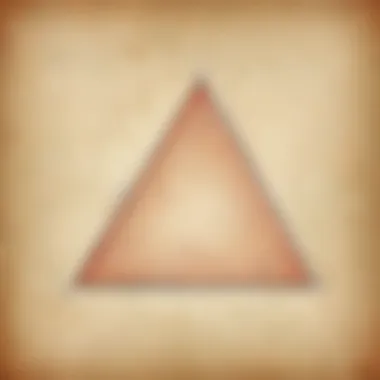
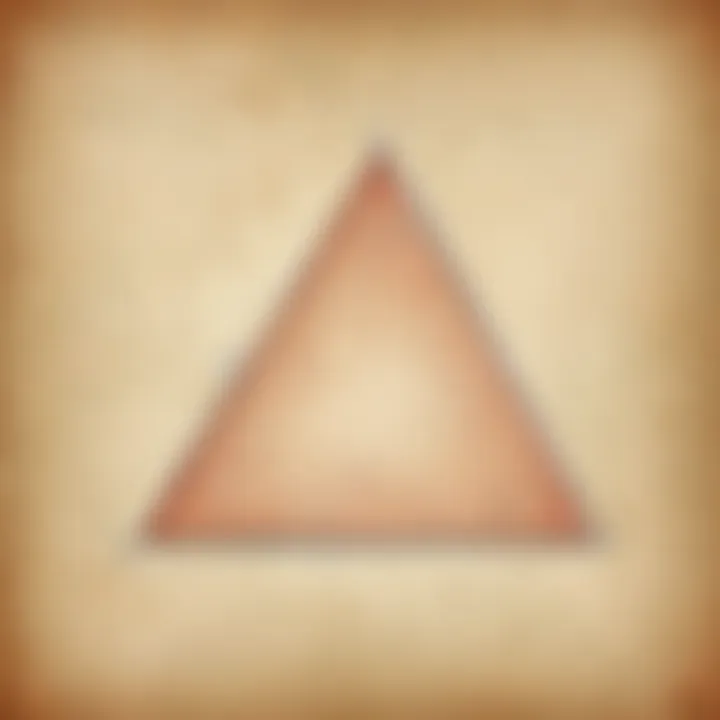
- Square: Side × Side
- Rectangle: Length × Width
- Circle: π × Radius²
Recognizing these shapes and their intrinsic properties is vital for young learners. Understanding shapes is the foundation for appreciating their measurements.
Importance of Learning Area Formulas
Learning area formulas is more than just memorizing equations. For young learners, these formulas facilitate better spatial awareness. Comprehending how to calculate area empowers students to approach various real-world problems with confidence. Here are a few key benefits of learning area formulas:
- Foundation for Advanced Topics: A solid understanding of area calculations sets the stage for more complex mathematics, including algebra and geometry.
- Practical Skills: Being able to calculate the area has practical applications, such as determining how much paint is needed for a wall or how much flooring is required for a room.
- Critical Thinking Development: Working with area formulas encourages critical thinking and problem-solving skills as students perform calculations and interpret results.
In summary, careful instruction in area calculation introduces foundational mathematical skills that provide benefits far beyond academic contexts. Students equipped with this knowledge begin building confidence in their problem-solving abilities, arming them for greater challenges in math and other disciplines.
Basic Concepts of Geometry
Understanding the basic concepts of geometry is vital for grasping the fundamental principles of area calculation. Knowledge of these principles lays the groundwork that helps young learners engage with more complex ideas in mathematics. Geometry involves not only shapes but also their properties and measurements. By internalizing these concepts, students create connections and develop critical thinking skills necessary for solving problems in spatial contexts.
Shapes and Their Properties
Geometric shapes are the foundational elements of geometry. Every shape has distinct properties that define its structure. For instance, consider a square. It has four equal sides and each corner has a right angle. This simplicity allows students to visualize and memorize the characteristics of shapes.
Other examples include:
- Circles: No corners; all points are equidistant from the center.
- Triangles: Three sides; the sum of its angles always equals 180 degrees.
- Parallelograms: Opposite sides are equal and parallel.
By recognizing these properties, learners become adept at identifying shapes in their environment. This skill shows that geometry is not just theoretical; it connects to real-world understanding.
Units of Measure
Units of measure provide the tools to quantify dimensions of objects. They are essential for calculating the area of shapes effectively. Common units used include:
- Square centimeters (cm²)
- Square meters (m²)
- Square inches (in²)
- Square feet (ft²)
The choice of unit can vary depending on the size of the object being measured. Understanding how to convert between these units is equally important, as it ensures accuracy in calculations. Students should learn how to utilize appropriate units and foster confidence when measuring and calculating areas.
Learning geometry benefits critical thinking and improves spatial awareness for children.
Area Calculation for Various Shapes
Area calculation is vital for understanding geometry, especially for young learners. Recognizing how to find area helps in practical applications, like measuring space needed for furniture or determining how much paint is required for a wall. Emphasizing these concepts in this guide supports curiosity and builds a positive relationship with math.
Calculating the Area of Squares
Formula Explanation
The formula for calculating the area of a square is simple: Area = side × side or Area = side². This equation shows how the area increases as the length of the side grows. It is beneficial because this formula is easy to remember. Understanding square area also lays the groundwork for lessons on other shapes, reinforcing fundamental math skills.
Example Problems
Example problems are crucial. They allow learners to apply formulas to real-life scenarios, turning abstract concepts into practical exercises. For instance, if one side of a square measures 4 cm, the area will be 16 cm². These examples illustrate that learning by doing helps deepen understanding and retention of the concepts.
Calculating the Area of Rectangles
Formula Explanation
The area for rectangles is found using the formula: Area = length × width. This formula connects to daily life, influencing design and measurement. For those who enjoy organizing spaces or building, knowing how to compute a rectangle's area is a beneficial tool. When students practice this formula, they gain confidence in their abilities and learn the importance of dimensional awareness.
Example Problems
Working through example problems enhances learning. For example, if a rectangle has a length of 5 m and a width of 3 m, its area is 15 m². These examples not only clarify the process of calculating the area but also help learners see and appreciate the method’s utility in everyday life. Practice reinforces skills and fosters independent problem-solving abilities.
Calculating the Area of Triangles
Formula Explanation
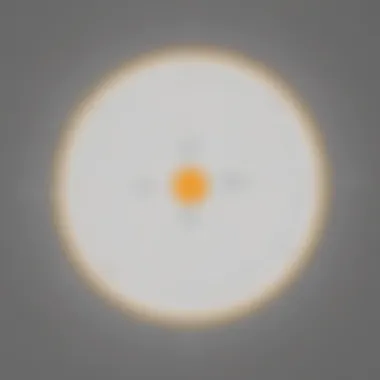
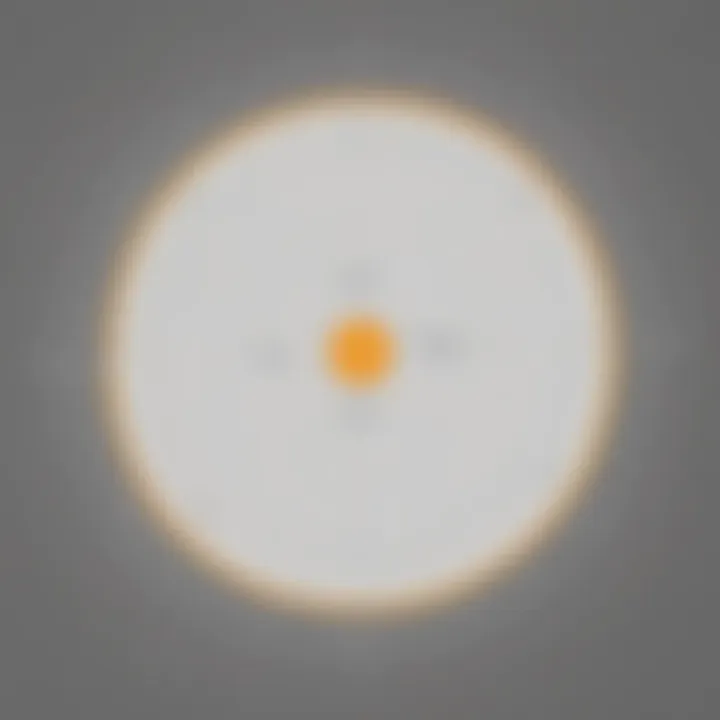
To find the area of triangles, the formula used is Area = (base × height)/2. This approach differentiates triangles from rectangles through the division by two. Such understanding of triangular shapes is significant, offering dimensions to geometric understanding, especially for students who show inclinations towards artistic disciplines or advanced fields of study.
Example Problems
Practicing with example problems further grounds understanding. Suppose a triangle has a base of 6 cm and a height of 4 cm. Applying the formula gives an area of 12 cm². Working through similar examples promotes clarity regarding triangular shapes and their distinct properties, thereby enriching students' geometric flexibility and capability.
Calculating the Area of Circles
Formula Explanation
Circles use a different formula. The area is calculated using Area = π × radius². Here, π (pi) is a constant around 3.14, which steadily enriches mathematical knowledge. This geometric shape strongly appears in designs, architecture, and nature, making it beneficial for students to grasp and understand its area calculations intricately.
Example Problems
Through example problems, learners appreciate the practical implications. If a circle has a radius of 3 cm, the calculation yields an area of about 28.26 cm². These instances not only encourage persistence but also show how the concepts blend into various disciplines.
Calculating the Area of Parallelograms
Formula Explanation
When working out areas for parallelograms, the formula is Area = base × height. Notably, this formula overlaps with the rectangle's formula, showcasing similarities between figures. Understanding how parallelograms can be manipulated to show similar area measures is crucial for skill-building and enhances the versatility of students in handling diverse shapes and structures.
Example Problems
Moreover, hands-on example problems prove vital in consolidating learning. If a parallelogram has a base of 5 cm and a height of 3 cm, its area is 15 cm². Engaging with various instances ensures that students do not only memorize formulas but genuinely understand comprehension and can apply their knowledge across different shapes.
Calculating the Area of Trapezoids
Formula Explanation
Trapezoids introduce students to more complex structure with their area calculated using Area = (base1 + base2) × height / 2. This mix of bases represents a unique mathematical approach, broadening comprehension of symmetry and area variations among different figures. It’s a beneficial addition to understanding, where students start to see connections rather than isolated parts of geometry.
Example Problems
Example problems reinforce trapezoid calculations well. If one base is 6 cm, the other base is 4 cm, and the height is 5 cm, the area becomes 25 cm². These exercises emphasize students' abilities to synthesize geometric knowledge through calculation across different fields, making think more independently as mathematical investigators.
Composite Shapes and Area Calculation
Composite shapes represent a fascinating aspect of geometry, capable of combining multiple basic shapes into a single entity. Understanding composite shapes is essential for children, not only because it enhances their geometric skills, but also because it aids in critical thinking. The ability to break down complex figures into known simpler shapes fosters analytical skills and enhances problem-solving capabilities. Through the exploration of composite shapes, young learners grasp how different shapes interact and form new figures—a foundational lesson in geometry.
Defining Composite Shapes
Composite shapes are figures made up of two or more simple geometric shapes. This can include combinations of squares, rectangles, triangles, circles, and other polygons. Often, the overall area of a composite shape can be calculated by separating it into its individual components.
Properties of Composite Shapes
- Made of basic shapes: Features simple figures linked together.
- Varied configurations: Can be arranged in numerous ways, increasing complexity.
- Flexible calculations: Each section can be calculated individually and added up to determine total area.
To illustrate this concept, consider a composite shape comprising a rectangle and a semicircle on one end. Learning to identify parts fosters awareness of geometry's practical use in various contexts.
Calculating Area of Composite Shapes
Calculating the area of composite shapes follows a straightforward yet systematic process. First, identify the individual simple shapes within the composite figure. Second, calculate the area for each unique shape using appropriate formulas. Finally, add all the areas together to determine the total.
Step-by-Step Breakdown
- Step 1: Identify each simple shape.
- Step 2: Apply formulas to calculate each area:
- Step 3: Sum the areas to find the composite area.
- For example, separate a complex figure into rectangles, triangles, and circles.
- Rectangle: Area = length × width
- Triangle: Area = 1/2 × base × height
- Circle: Area = π × radius²
Note: Be attentive to any extra shapes overlapping in your figure, as subtraction might be needed.
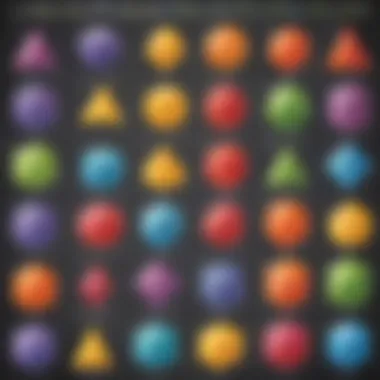
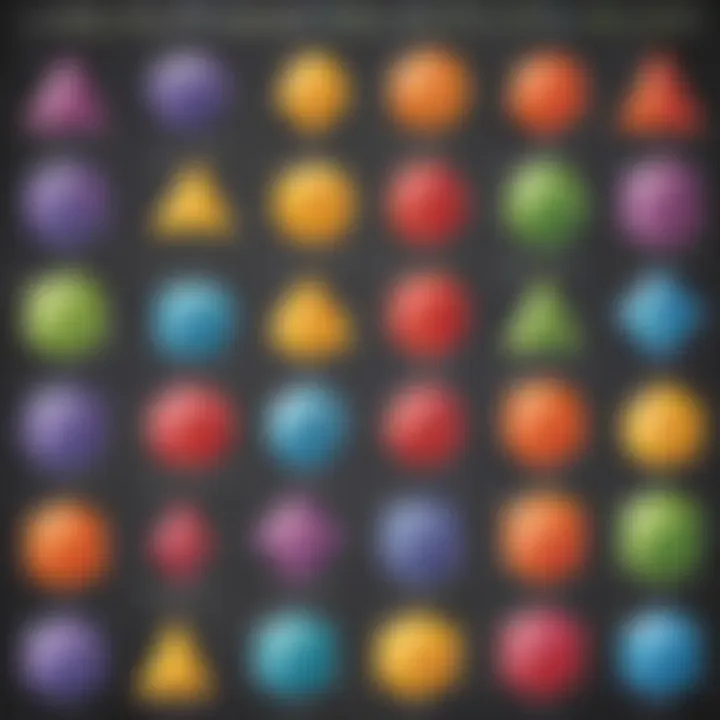
Example Problem
Suppose you have a rectangular garden measuring 5 meters by 4 meters. At the end of the rectangle, there is a semicircular flower bed with a radius of 2 meters. The area calculation for this composite shape would look like this:
- Area of rectangle = 5 × 4 = 20 square meters
- Area of semicircle = 1/2 × π × (2)² ≈ 6.28 square meters
- Total area = 20 + 6.28 = 26.28 square meters
Understanding composite shapes allows children to connect simple formulas to more complex real-world applications. This comprehension sets a sturdy foundation for their future mathematical undertakings.
Practical Applications of Area Calculation
Understanding how to calculate area is more than just an academic exercise. It has several practical applications that help young learners see the relevance of their studies in real life. Knowing area calculation empowers students to tackle various tasks, whether they are aware of it or not. This section explores the importance of area calculations and presents engaging ways for children to connect these foundational concepts with their everyday activities.
Real-World Examples
Area calculation finds its roots in various real-world scenarios. Consider the following examples:
- Art and Design: When decorating or planning a room, children can measure the floor’s area to determine how much carpet or tile they might need.
- Gardening: A child planting a garden can calculate the area of each plant to determine how much space each will need. This practice assures enough exposure to sunlight and nutrients.
- Craft Projects: While creating crafts, knowing areas might help them select paper sizes accurately. For example, if they are making a poster, understanding area can ensure they buy enough materials.
Effective area calculation is relevant in both daily tasks and creative endeavors; it fosters a functional understanding of the physical world.
In each instance, students use area calculations without realizing they are practicing mathematical principles. Thus, the application of area in various subjects illustrates why it matters and resonates with young learners.
Hands-On Activities for Learning
Using hands-on activities offers an interactive way for students to conceptualize area calculation. Here are varied activities to facilitate their learning:
- Classroom Floor Plan Creation: Students can measure and sketch a scaled version of their classroom. It encourages measurements and area calculations. This will deepen their understanding of how dimensions relate to physical spaces.
- Tiling a Fake Bathroom: Setup a mini-project where students determine tiles’ dimensions and how many tiles are required to cover the fake bathroom they outlined. This activity can build more immediate relevance by connecting mathematical formulas to tangible outcomes.
- Art on Paper Grids: Have students draw designs or patterns using a square grid. They calculate the area covered by their designs. This task engages artistic sensibilities while applying area formulas concretely.
These activities draw upon principles of area calculations while fostering creativity and imagination. Implementing them will make learning enjoyable while encoding fundamental math skills.
Common Mistakes in Area Calculations
Understanding area calculations includes not just knowing the formulas, but also recognizing where mistakes can happen. By identifying common pitfalls, students can enhance their calculations and avoid errors that might occur. This section is crucial for building a strong foundation in geometry and fostering confidence as they tackle various problems.
Misunderstanding Formulas
One major issue young learners face is the misunderstanding of how formulas apply to different shapes. Area formulas vary, and confusion can arise about which formula belongs to which shape. It is important to remember that each shape has unique properties affecting its area calculation. Suppose, for instance, students apply the triangular area formula when dealing with rectangles. This error leads to incorrect answers and can cause frustration.
To aid in understanding, here are key points for students to grasp concerning formulas:
- Specificity: Each formula serves a particular shape.
- Dimensions: Correctly identifying the base and height is essential, especially in triangles and parallelograms.
- Personalizing: Associating formulas with shape characteristics helps solidify concepts.
Additionally, teachers and caregivers should encourage practice with various examples. Revisiting these formulas can help enhance memory retention and promote fruitful understanding. Tours through small personal stories or relatable examples might also encourage connection with the formulas.
Calculation Errors
Accurate calculations require careful attention to detail, yet miscalculations are all too common. Here are several errors that students often make during area computation:
- Addition and Subtraction Errors: While finding the total area of fixed or composite shapes, students might add or subtract incorrectly.
- Unit Confusion: Mixing square units can lead to significant discrepancies. For example, it is not valid to express answers in square meters and square centimeters side by side.
- Neglecting to Square Dimensions: Shape dimensions must be squared for area calculations. When computing the area of a square with side length 3, the correct area should be calculated as 3 x 3 = 9, not 3 + 3.
To minimize these errors, students can employ simple strategies:
- Take time to reread questions carefully.
- List out the formula and each step in the calculation.
- Verify whether units match within the calculation. Remembering to square numbers every time may also help in maintaining clarity. In the end, careful consideration minimizes calculation errors, leading to more accurate results.
Engagement in further exploration through practice problems broadens problem-solving skills.
By addressing these common mistakes regarding formulas and calculation precision, young learners can consolidate their understanding and enhance their competence in area calculations.
Epilogue and Further Learning
Understanding area calculation is a vital skill that extends beyond math classes. It promotes logical thinking and helps young learners grasp how spaces relate to one another. This conclusion emphasizes the practial implications of area formulas. To conclude, mastering these concepts is a foundational step in building a strong mathematical understanding, which will serve as a building block for future learning in geometry and other mathematical areas.
Recap of Key Points
- Different shapes like squares, rectangles, triangles, circles, parallelograms, and trapezoids have specific formulas to calculate their area.
- Composite shapes can be analyzed by breaking them down into basic shapes for easier area calculations.
- Practical applications show how area calculations apply in real life, like in gardening or home decoration.
- Common errors often include misunderstanding formulas or making mistakes in calculations; it's benefical to double-check work.
- Learning tools and hands-on experiences encourage comfortable familiarity with these formulas and concepts.
Resources for Continued Learning
- Books: Look for introductory geometry books suited for children, ensuring they include illustrations and exercises.
- Websites: Educational websites like Wikipedia present valuable information and additional resources.
- Online Tools: Platforms such as Britannica provide engaging content that illustrates the concepts taught in this article.
- Community Learning: Include family and friends in learning games focused on shape recognition and area measurement; engaging activities deepen understanding.
- Interactive Simulations: Using educational apps or interactive websites, such as Reddit's math communities, helps tie together theoretical knowledge and practical application through fun and safe environments.
Enhancing the grasp of area calculations ensures learners are well prepared for future mathematical challenges. Continuous practice and exploration foster a positive relationship with mathematics and geometry for young minds.







